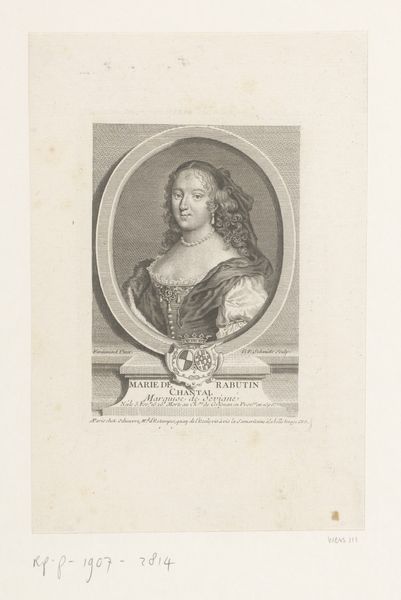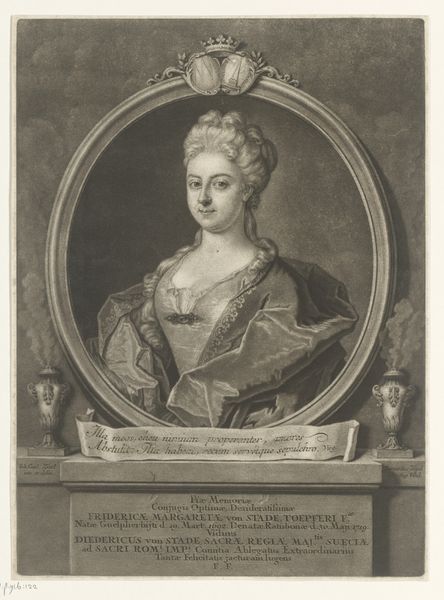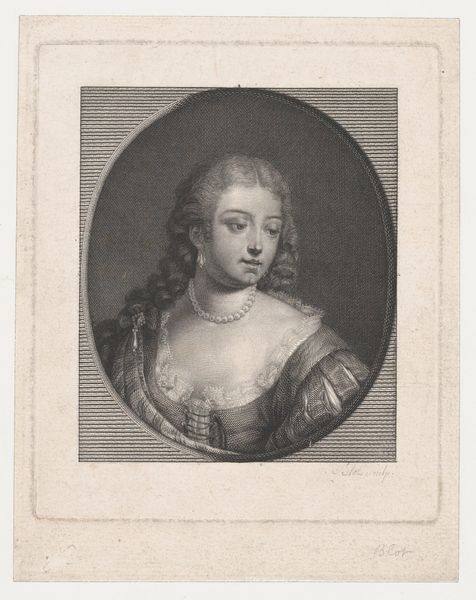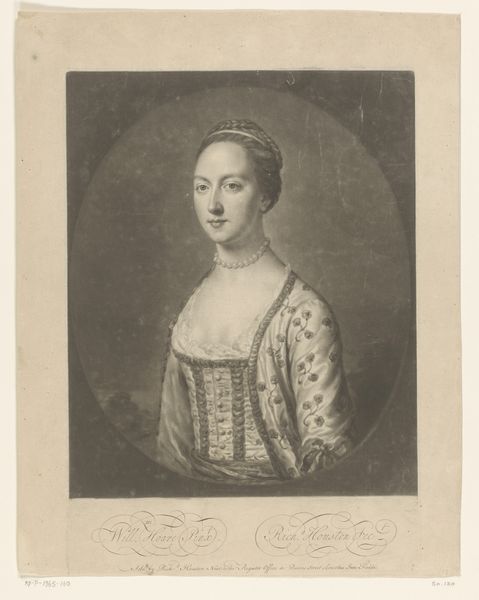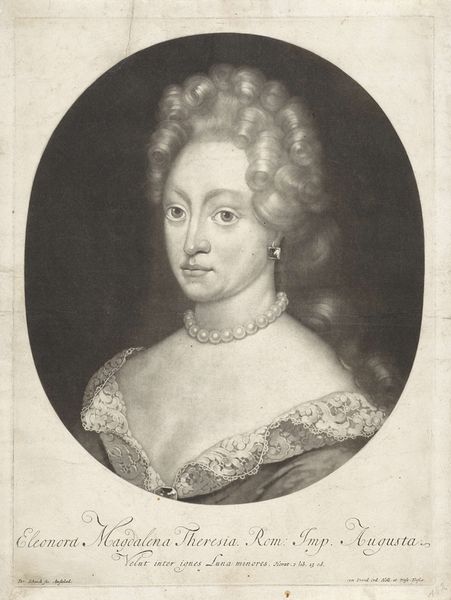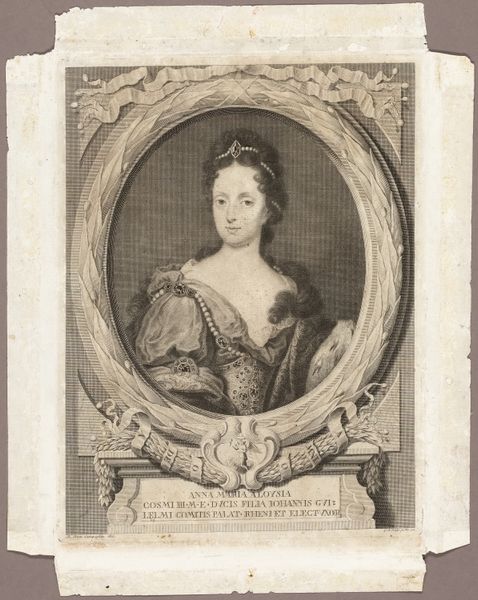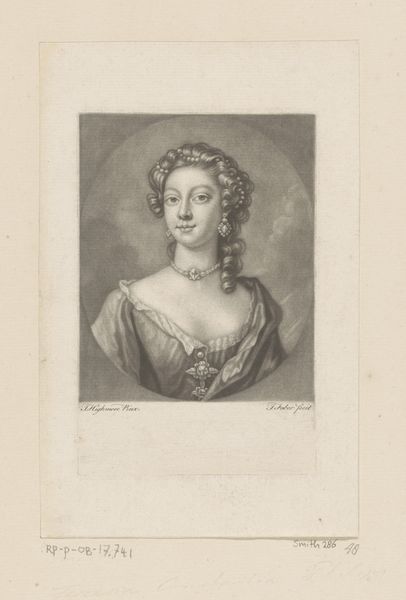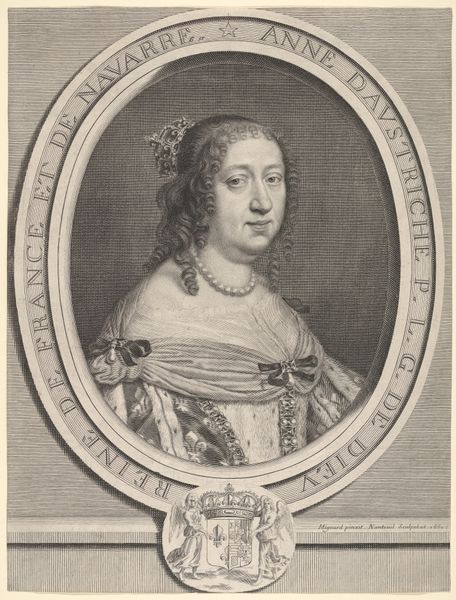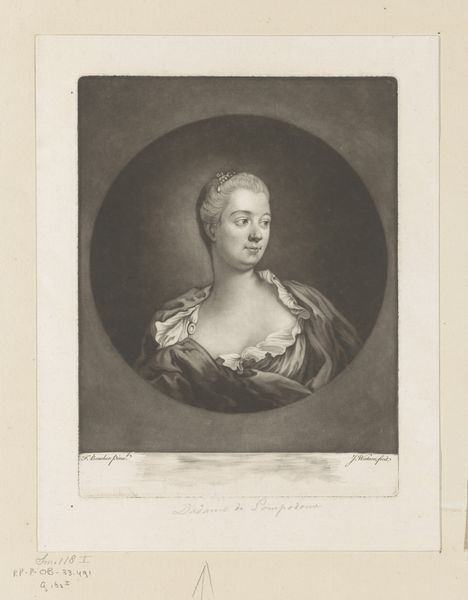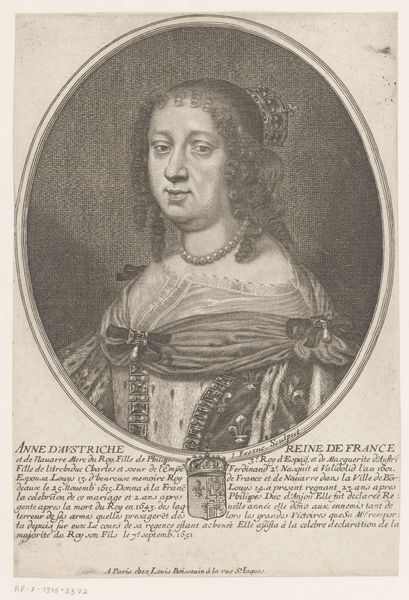
engraving
#
portrait
#
line
#
engraving
#
rococo
Dimensions: height 134 mm, width 107 mm
Copyright: Rijks Museum: Open Domain
Curator: Today, we’re looking at a piece by Antoine de Marcenay de Ghuy, completed in 1768. It’s an engraving, titled “Portret van een onbekende vrouw met parelsnoer," which translates to "Portrait of an Unknown Woman with Pearls." Editor: My immediate impression is one of quiet elegance. The oval composition creates a sense of contained serenity. The limited tonal range further emphasizes a muted, dignified presentation. Curator: Absolutely. Pearl necklaces during this period weren't simply fashion statements; they represented purity, status, and societal belonging. The woman's assured gaze and slight smile suggest she's fully aware of her position. Her unstated confidence seems intentional. Editor: Indeed. Consider the lines, the almost meticulous rendering of the lace, the way the light catches on the pearls. Each element contributes to a refined and calculated visual narrative. I'd argue the visual emphasis serves not only decorative value but also underscores her self-possession through strategic sartorial display. Curator: Beyond individual symbolism, it's intriguing to consider what such a ubiquitous representation tells us about broader societal values of the time. The woman might be unknown by name now, but in her time, she embodied ideals that held significant cultural meaning. Think about all those portraits created by this artist. What sort of societal function are these images supposed to fulfill? Editor: A great question. The uniform use of Rococo motifs is significant. We might analyze her hair style as part of an intentional aesthetic program – not only a means to elevate her status but also to signify allegiance to certain social ideals that Rococo explicitly embodies. Curator: To add to your point, this "Unknown Woman" is still, in many ways, "known." She exists through this careful construction, carrying fragments of a shared history within her image. I wonder what traces will we leave to be decoded about us. Editor: That is a fascinating thought. Ultimately, the print allows us to encounter her gaze across centuries. It encourages contemplation, beyond individual identity, of an aesthetic that aimed to capture more than appearance.
Comments
No comments
Be the first to comment and join the conversation on the ultimate creative platform.
